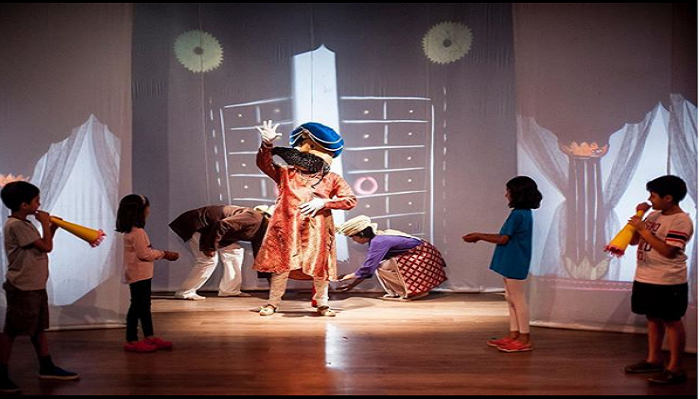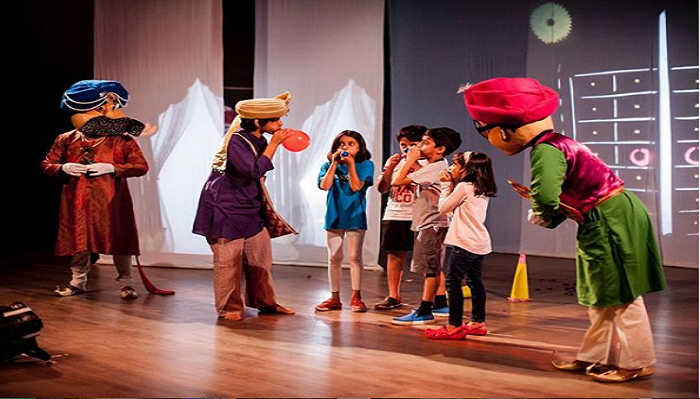In the quest to entertain children, Guppy theatre brought to the entertainment world a fresh amalgamation of elements designed to rope children in its charm. Fusing the classic art of puppetry with the current technological nuances, Guppy theatre conjured up a distinct style of theatre that has perhaps not been tried before. We spoke to the Guppy theatre’s CEO Cyril Vincent Michaud who gestated this inventive concept to understand more about this curious form of entertainment.

What incepted the concept of Guppy Theatre in your mind?

At Guppy Theatre we want to create a space for kids that will help them grow kinder, smarter, more creative and more expressive. To do so we decided to create a participative transmedia IP for children. They have a very different relationship to media than adults. Children born with all type of media available and adult have encountered different media one after the others (ranging from book to radio to the internet to AR/VR and the AI-based persistent story world). It is important also for us to provide active viewing, participative IP in a children entertainment industry that provides a massive amount of passive content and provoke passive attitude. We felt it was our responsibility to provide the future generation playful tools to develop their soft skills. We have combined the idea of a Guppy (Storyteller who exaggerate) and Theatre as a storytelling form that can be used in much different media environment like small screen, medium screen, large screen, small venues, large venues. Different entertainment touchpoints that children used every day. Theatre and storytelling have always been extraordinary tools of expression that endow both the ‘teller’ and the ‘listener’ with voice and agency. Guppy Theatre combines the age-old art of puppetry with current technology and opens up new ways for kids, not just to access content but, to also interact with their fantasy worlds. So at Guppy Theatre, we don’t simply tell stories. We show that stories can be transformed by the medium in which they are told. We show that stories can also be transformed by those who listen to them. We show that the same story can have different forms and that thinking differently is not only possible but lots of fun!

India has a rich history of storytelling which is enhanced by the technology of the modern times. Creators have been experimenting with new ways to spruce up their stories. We have watched the Guppy Theatre performance which seemed to successfully capture Children’s imagination. Could you tell us as to what sort of R&D went into making the concept as immersive as it is?
We have worked closely with children in Mumbai and Delhi to create the characters of the first IP (Mastipur TM ) to be performed in Guppy Theatre. It took us two years to develop the first IP across medium with teams from India, Europe and USA. Teams are composed of scriptwriters, writers, show directors, art directors, illustrators, teachers, child psychologists, animators, music composers, AR developer and mentors from different media field. We attended quite a few workshops for example in Bologna Children Book Fair and Annecy animation festival /MIFA.
What led you to choose the vintage theme for the Guppy Theatre story?
The Maharaja of Mastipur, first transmedia show of Guppy Theatre has been inspired by six books produced by Crossover Media. These six stories have been inspired by true Indian stories that took place centuries ago, told by Guppy and released in his multiform theatre: Guppy Theatre. These books will be republished this year and next year.
What other stories are in the pipeline in terms of the Guppy Theatre performances?
We are working on two new transmedia show/IP for Guppy Theatre. They will be for the older age group.
Could you give us an estimate of the overall budget of the play?
To develop the Guppy Theatre transmedia model and the first IP Mastipur, we invested a few crores
What is the monetisation model for the same?
Each medium has its own revenue model and each medium promote the others as stories are told using a different medium. The overall monetisation model is to have multiple sources of revenue for each story.
Could you share as to what techniques and ways you used along the course of the play?
For the Mastipur Transmedia Show, we use multiple technologies: a variety of shadow puppetry techniques, video mapping, AR, 2D animation in a 3D environment.
How long have you been in this trade? Tell us about your background.
Neerja Nanda, Chairman of Crossover Media has been in the publishing industry for many years in India. Cyril-Vincent Michaud, Ceo of Crossover Media has been in the transmedia industry since the ’90s: Digital Art, Video Game, Music, Experience Design, Event… In Europe and India.
Tell us about the reception and feedback you have received in relation to the Guppy Theatre performances.
We got a very good response from the Children and Parents during the show and after the show.
What are your future plans?
The current plan is to release Maharaja of Mastipur IP across the medium, to develop the community around Guppy Theatre. The future plan is to create new transmedia shows / IPs for Guppy Theatre for different age group and with a larger variety of medium.
With such environments manifested from lights behind the curtains intertwined with cut-out characters and interactive story-telling, we see the team of artists burrow their ways into children’s hearts. We hope more such disruptive and creative forms of entertainment replenish the Indian entertainment scene in the days to come.
